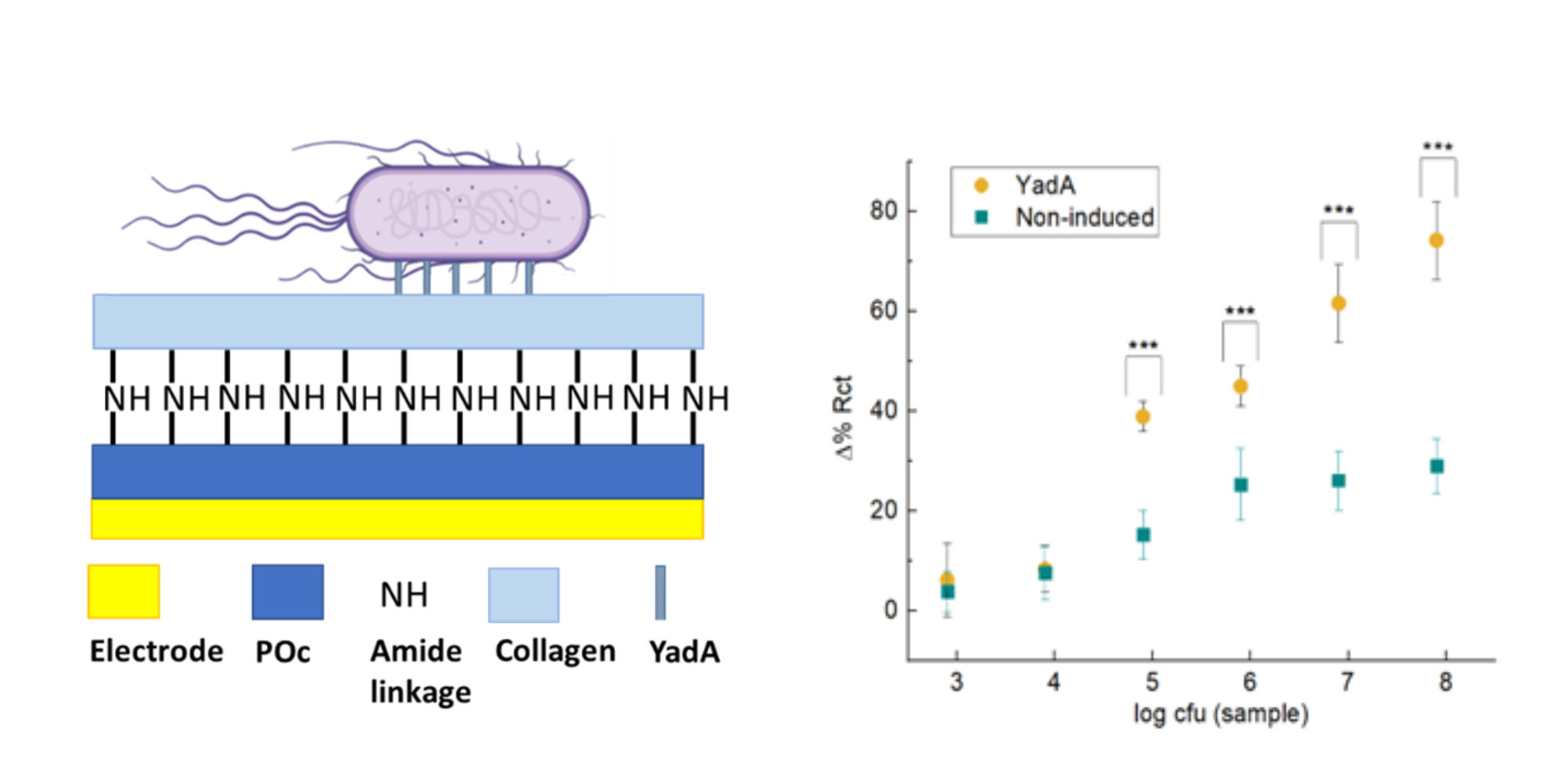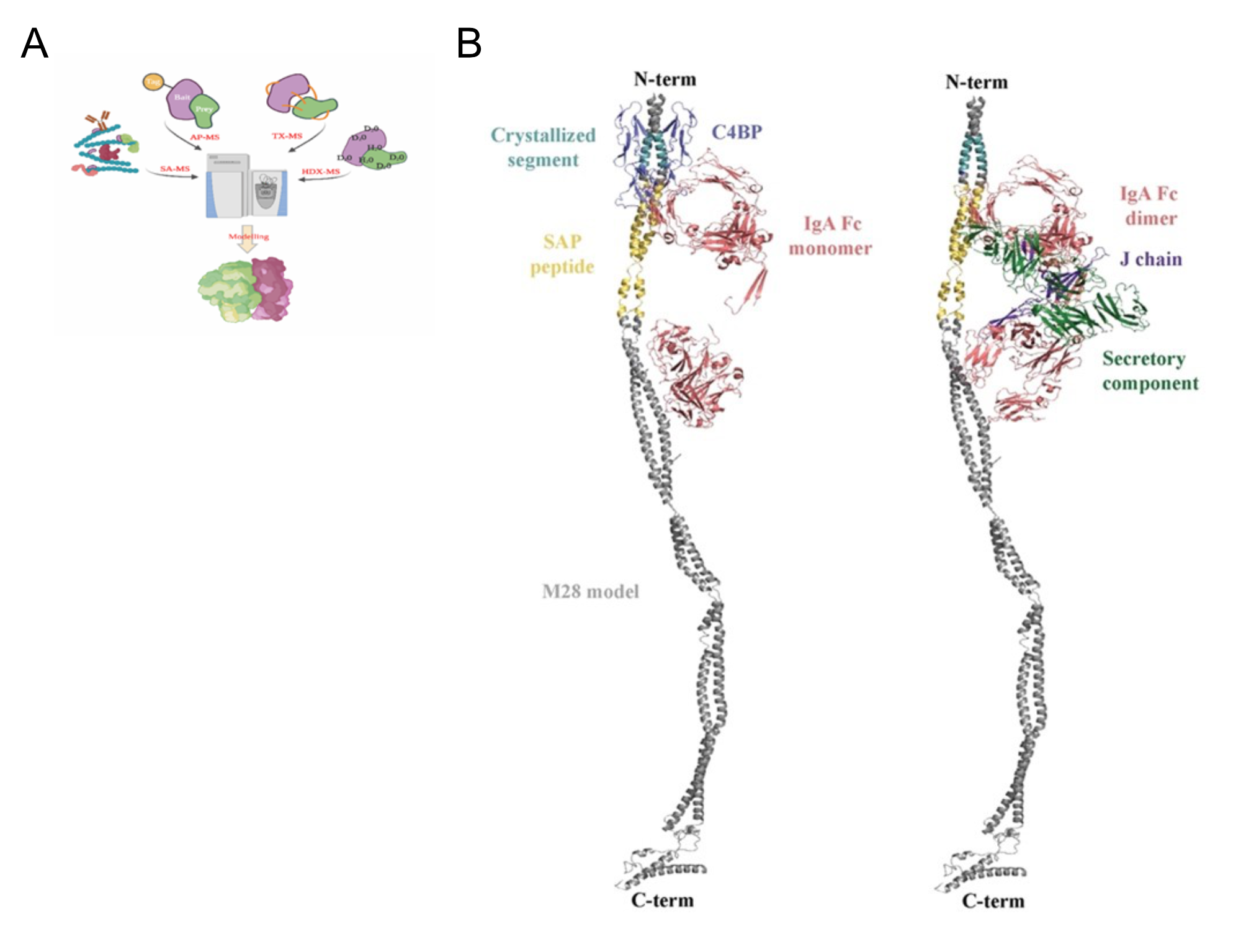Context and overall objectives of the project
Infectious diseases, particularly drug resistant pathogens, are a key global health issue. The decreasing efficacy of antibiotics is a major concern: classic antimicrobial therapy is failing; and deadly infectious diseases are (re)emerging – the most recent being of course Covid-19. New, precise, rapid diagnostics are urgently required to lower the demand for therapeutic treatments, reduce use of antimicrobials and slow the rise of drug resistance.
Viral and Bacterial Adhesion Network Training (ViBrANT) places adhesion at the heart of virulence: it plays the first and decisive role in the infection process of pathogens. Bacteria and viruses adhere to different surfaces, to each other, to host molecules or to host cells. Pathogens use adhesins to colonize tissues and cause infections, to bind host molecules for immune evasion and, for bacteria, to create antibiotic-resistant biofilms on implanted devices. ViBrANT provided Europe-wide world-class training to our 15 students (ESR1-15) through bottom-up research: clinical microbiology, functional studies of adhesins, elucidating structures and designing new diagnostic tests and devices.
Work performed from the beginning to the end of the project
Work package 1. An extensive collaboration between ESR3&4 led to the first concrete measurements of Yersinia enterocolitica YadA-collagen interactions. Impedance-based biosensors allowed ESR4 to show that only the glycosylated host protein vitronectin binds YadA (Meuskens et al. Front Microbiol 12:738818 (2022)). This work has fed into WP3 and WP4, demonstrating that biosensors can be used to detect the presence of adhesins on the outside of bacteria, opening a route to point-of-care diagnostics (WP4). ESR12 studied the interactions of M-protein, the main virulence factor and adhesin of Streptococcus pyogenes. Using cutting-edge techniques, he identified novel interactions, suggesting previously unknown immune evasion strategies and that the protein interaction networks that form depend on the local microenvironment (Chowdhury et al. mSystems 6:00272-21 (2021)). By state-of-the-art sequencing ESR6&7 showed that Bartonella henselae adhesin A (BadA) is nearly 4000 residues long (not ≈3000), and with ESR12 determined which parts of this very long protein bound human fibronectin as a promising basis for novel antimicrobial therapies.
In Work package 2 ESR2 purified individual sections of the trimeric autotransporter adhesin BpaC from Burkholderia pseudomallei, including repeats of an unknown structure from the C-terminus. The X-ray structure was remarkable it showed that the core of the protein is extremely negatively-charged and hydrophilic, not hydrophobic. ESR4 successfully recorded initial solid-state NMR spectra with collagen. This has enabled her to show that the collagen and autoaggregation binding sites overlap, and assignments will identify the interacting residues. ESR13 studied the three-dimensional structure of a protein subunit that polymerizes into filaments to drive secretion of 15 different toxins and enzymes in the bacterium Dickeya dadantii. This will allow us to understand its mechanism and so how to interfere with it. ESR10 published a reconstruction of tick-borne encephalitis virion at 3.3 Å (Pulkkinen et al. Viruses 14: v14040792 (2022)), and mapped 59 host protein interactions to the viral surface. Of these, just 3 are previously identified receptors: one has been verified by pull-down experiments. ESR11
studied the complex between the human adenovirus type 5 penton base capsid protein and its integrin receptor by cryo-electron microscopy, leading to a preliminary structure of the interaction of the complex, as well as a 4 Å structure of the penton base.
Work Package 3 focussed on adhesins (WP1, WP2) in microfluidic setups and antiadhesive coatings. ESR8 devised coatings to prevent bacteria adhering to plastic surfaces – either by making it super-hydrophilic or by making it superhydrophobic. Bacterial adhesion onto modified surfaces was reduced by about 90%, and the modifications were robust through at least 5 wash cycles. ESR9 developed specific aptamers for biosensors to detect YadA and Moraxella catarrhalis UspA2. She could then develop novel electrochemical sensors: one had a detection range from as few as 104 to 7.0×107 bacteria/mL. This would make it useful in point-of-care diagnostics. ESR14 developed microfluidic approaches to detecting bacteria, being able to capture, fix and use a microscope to detect E. coli.
Work Package 4 focussed on important pathogens: Staphylococcus aureus (an opportunistic pathogen related to MRSA), SARS-CoV-2 and Pseudomonas aeruginosa (opportunistic lung pathogen in cystic fibrosis (CF)). ESR3&4 developed an electrochemical based biosensor to detect whole pathogens based on the YadA-collagen interaction. ESR5&15 worked in a large diagnostics enterprise (bioMérieux). ESR5 developed more robust epidemiological markers for S. aureus by determining its genomic evolution in the nose over three years (Goyal et al. Front Microbiol 10: 1525 (2019)). She then worked on diagnosis and typing of SARS-CoV-2. ESR15 worked on characterizing P. aeruginosa and its role in chronic lung infections in (CF) patients, as the infective strains in CF patients, unlike wild-type strains, are slow growing and mucoid. The strains were analyzed by modern high-throughput methods on both CF and non-CF patients, all of whom had lung transplants (Datar et al. Front Microbiol 12: 604555 (2021)). Analyzing the evolution of P. aeruginosa strains showed that identifying the right antibiotic rapidly will require innovative changes in diagnostics.
So far, ViBrANT has generated 42 published papers. To achieve global outreach, we leveraged the language skills of our ESRs, who wrote blogs and vlogs in 15 different languages. We did school visits (virtual and in-person) around the world. Our Twitter account has 627 followers and we have written 333 tweets.
Progress beyond the state of the art and potential impact
The work by ESR5&15 will lead to important advances in hospital and point-of-care diagnostics for very important pathogens (e.g. Pseudomonas aeruginosa, SARS-CoV-2). This will have a broad socio-economic impact (improved patient outcomes, sales of diagnostics kits) and thus also Europe- and world-wide societal benefits. The work on viruses (ESR10&11) has revealed novel aspects of how viruses interact with their receptors, and novel targets. Till now, no-one has known how trimeric autotransporter adhesins bind their multiple human targets. Work by a large group of ESRs (1, 2, 3, 4, 6, 7, 14) focusses on different aspects of binding have begun to answer this question, using a variety of techniques. Our work on coatings (ESRs7-9) will lead to novel therapeutic concepts and surface coatings that will be important, for instance, in medical devices by preventing hospital-acquired infections.

Figure 1 Schematic of collagen-adhesin interaction-based biosensor (left) and binding of YadA-expressing bacteria using electrochemistry. Fully fabricated biosensors were assessed with YadA-induced/non-induced bacteria. Samples ranging from 8×102 to 8×107 bacteria/10 µL were tested. Figure reproduced from Leva-Bueno et al., Sens. Diagn. 2022

Figure 2. Schematic overview of integrated quantitative and structural mass spectrometry techniques. B) Different structural models of M28 with IgA, sIgA and C4BP.
Taken from Chowdhury et al., mSystems 6 (5): e0027121 2021
